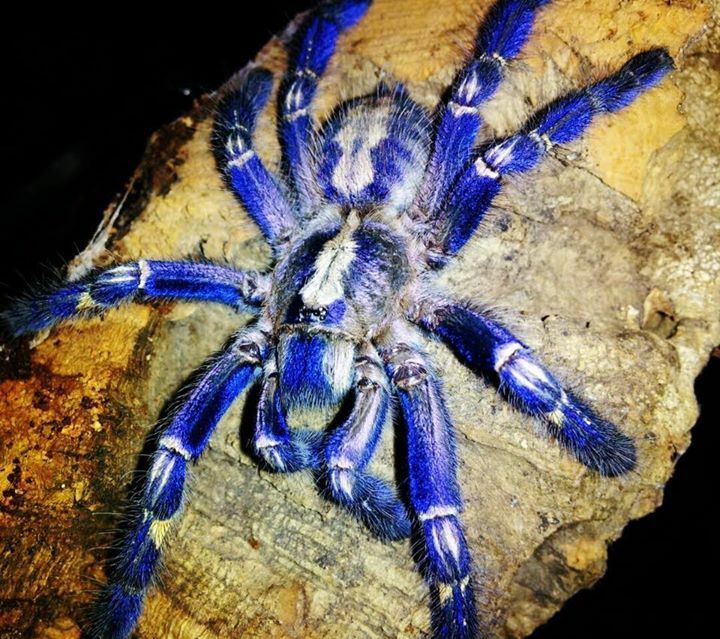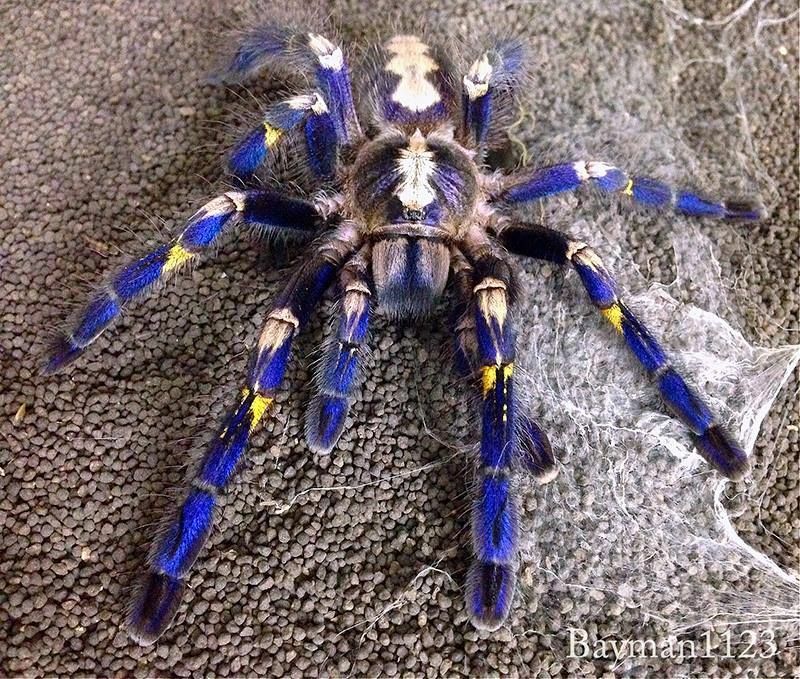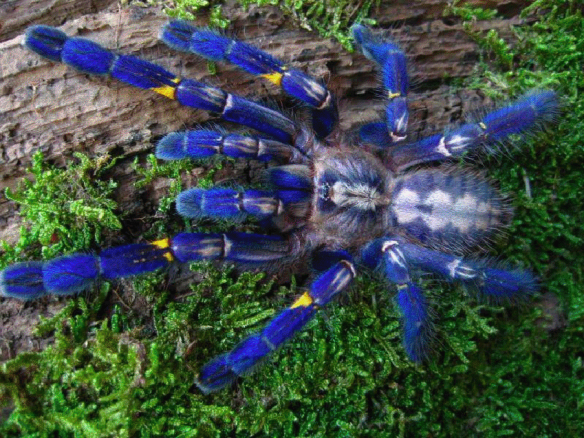Gooty sapphires are an Old World tarantula species, famous for their dramatic yellow and blue coloring. Broadly, Old World means ‘not native to North or South America’. In fact, their name holds the details of this tarantula’s origins. The first individual described was caught in the Indian town of Gooty in the early 20th century. But this is only half the story. It is now thought that one Gooty had arrived in town by train, because they have only been discovered in a small region of forest 60 miles east of there since.
Gooty tarantulas are famous for their exotic coloring. Their main body color is blue, not because of blue pigment, but due to special lamellated hairs on their exoskeleton. Lamellated means ‘scaly’. The scaliness of those hairs disrupts how light is reflected from their surface, so that blue wavelengths dominate. In fact, the hairs themselves are not blue at all! Because of this, how intensely blue a gooty sapphire looks will depend partly on how the light is hitting them. Beside their blue areas they also have a white fractal pattern running down the center of their back, and vivid yellow patches at some of the joints on their legs (which are the result of yellow pigment).
Gooty sapphires are venomous, and very much so -unlike tarantula species which rely on a venomous bite and flicking tiny irritating hairs from the sides of their abdomen to repel threats, gooties rely solely on their venomous bite as their only form of defense. To make it as effective as possible, they have adapted to produce a very powerful venom.





